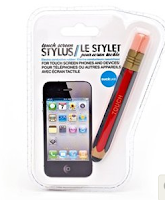It’s Friday!
Last Wednesday (September 18th),
Apple released the latest update to its operating system for iPads and iPhones,
iOS7. While there are many new and exciting features, and a sleek new designs
layout, there are some drawbacks, not the least of which has been reported
motion sickness with the zooming and animations. Although you are not currently
required to update the operating system on your iPad, you will need to upgrade
at some point and I thought I would provide step-by-step instructions on how to
complete this task as well as a few tips and tricks you can use with your iPad.
Upgrading:
First, be sure your device is connected
to a wifi network such as UGDSB public or your own home wifi system. If you are upgrading your own personal
device, this is a key step too so that you will not be charged for large
amounts of data usage. Also,
you may wish to connect your iPad to a power source, so there is no chance for
it shutting down during the process. Go
to ‘Settings’, tap on ‘General’ and then ‘Software Update’. Your current
operating system will automatically begin checking for updates. If an update is available, tap
‘Download” and the process will begin. Once
the download is complete you will receive a notification that the system is
ready to install, tap on ‘Install Now’ and wait for the device to complete this
process. If your iPad has a
great deal of apps, videos, or pictures stored on it, you may receive the
message that “This update requires at least X.XG of storage”. In this case, you can use iTunes to
complete the installation if you are able to connect it to your own personal
device (many UGDSB desktops and laptops are unable to install iTunes) or simply
delete some videos or apps you no longer use and begin the process.
So what’s new?
The first thing you will notice about
the new operating system will be the look of the lock screen, password and home
screen. Additionally, the
home page icons may not appear to all be there. This is because your folders will now
have multiple pages and there is no limit to the number of apps you can store
in a single folder. When
you open a folder you may see dots along the bottom of the insert, these
indicate how many pages are within the folder and which page you are currently
viewing. By swiping to the
left or right, the next set of apps will appear for you to tap to open. This will end the multiple folders
titled ‘Math 1’, ‘Math 2’, ‘Math 3’, etc.
You may be wondering where your search
feature has gone, considering swiping to the right from the home screen no
longer brings up this feature. Instead,
swiping from the top down on the home screen will bring up your search bar and
keyboard.
Closing running apps used to be achieved
by double clicking on the home button. While this is still the case, there are
a couple new changes. Simply
swipe each app toward the top of the iPad and it will disappear. If you are feeling particularly savvy,
or pressed for time, you can close multiple apps at one time by swiping upwards
with multiple fingers on each app. Swiping
from the left or right and tapping on an app, will allow you to switch between
apps that are currently open.
In mail or settings, etc. you can swipe
from left to right (backwards
swiping) and it will allow you to return to the previous page.
iOS7 has some new sounds available for
use as notifications, you may like to explore these by tapping ‘Settings’ and
going to ‘Sounds’
Useful for teaching is the iPad
dictionary feature. When
you are reading an ebook or article online, simply touch and hold the desired
word and it will highlight, then tap on define.
Finally, one key feature I would like to
highlight is the restrictions function. As
a teacher, multiple students may be using the device in one day and some tech
savvy children may be able to delete or install apps on the iPad without our
permission. Instead we can
lock the ability to perform these functions unless a password is
provided. Go to “Settings”
and tap on “General”. You
will have to scroll down to “Restrictions” and tap “Enable Restrictions”. Here you will be asked to enter a four
digit passcode. Then you
are able to allow or deny access to multiple features on the iPad such as
FaceTime, iTunes store in addition to Adding and Deleting Apps. Also, you can alter the level of
content allowed for the various features, so there is no chance of students
playing inappropriate videos or visiting adult content websites accidentally.
So, while it is not necessary to
update your iPad with the new operating system now, it will become a requirement
in the future; and although there may be a few bugs and kinks in the system,
there is no reason to fear updating your iPad to iOS7. I do however suggest trying it at the
end of the day when you will not need it and getting used to the new features
and app layout. This way
you will not be frustrated trying to find an app you had wanted to use in a
lesson, or share with a student.
If there are any questions regarding the
new operating system or iPads, please feel free to message me.
Have a great weekend,
Stace

















